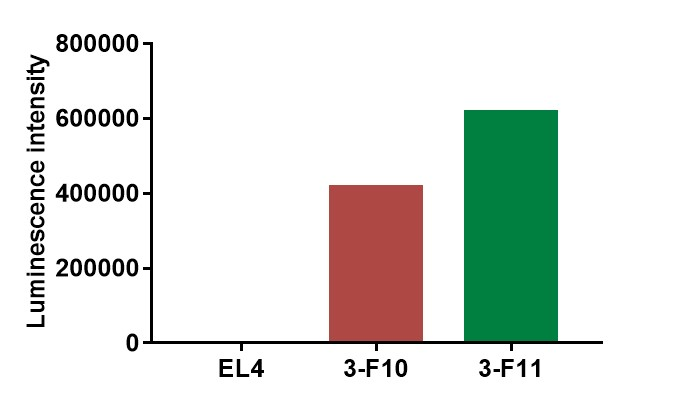|
Common name |
B-hCCR4-luc EL4 | Catalog number | 321851 |
| Aliases | CCR4, CC-CKR-4, CD194, CKR4, CMKBR4, ChemR13, HGCN:14099, K5-5 | Disease | Lymphoma |
|
Organism |
Mouse |
Strain | C57BL/6 |
| Tissue types | Lymphoma | Tissue | T lymphocyte |
The mouse Ccr4 gene was replaced by human CCR4 coding sequence and the luciferase sequence in B-hCCR4-luc EL4 cells. Human CCR4 is highly expressed on the surface of B-hCCR4-luc EL4 cells.
Application
B-hCCR4-luc EL4 cells have the capability to establish tumors in vivo and can be used for efficacy studies.
Targeting strategy

CCR4 expression analysis in B-hCCR4-luc EL4 cells by flow cytometry.Single cell suspensions from wild-type EL4 and B-hCCR4-luc EL4 cultures were stained with species-specific anti-CCR4 antibody. Human CCR4-luc was detected on the surface of B-hCCR4-luc EL4 cells but not wild-type EL4 cells. The clones 3-F10 and 3-F11 of B-hCCR4-luc EL4 cells were used for in vivo tumor growth assays.
The luminescence signal intensity analysis

The luminescence signal intensity of B-hCCR4-luc EL4 cells.The luminescence intensity was detected by Bright-GloTM luciferase Assay System (Promega, Cat E2610), and The clones 3-F10 and 3-F11 of B-hCCR4-luc EL4 cells has strong luminescence signal.
Tumor growth curve & Body weight changes


Quantitative imaging data & body weight changes










